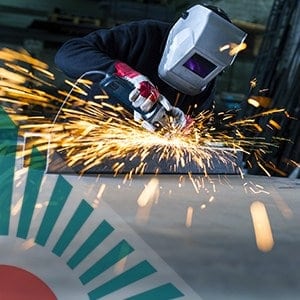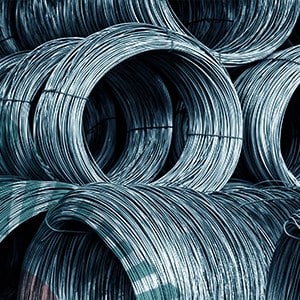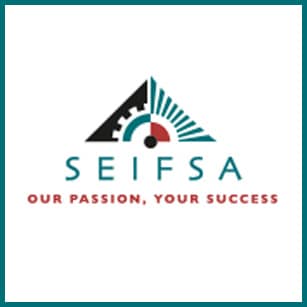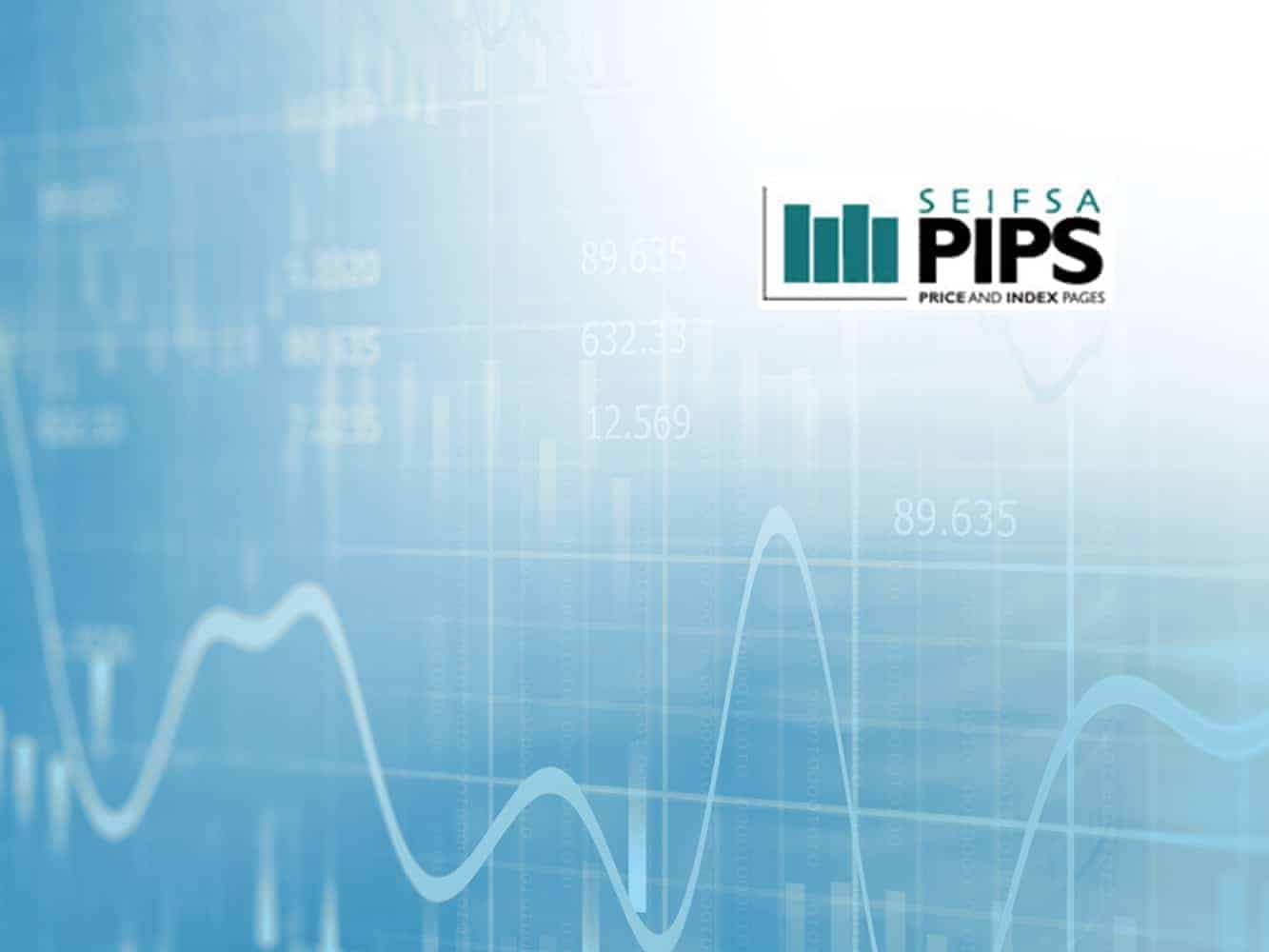THREE MORE INDICES MAKE THEIR DEBUT FOR SEIFSA PIPS
Three more indices make their debut for SEIFSA Pips
In a blog piece “What are Indices” by Seifsa economist Marique Kruger, she explains the importance of knowing how to price your tender by using the Price and Index Pages. SEIFSA ensures that as many industries are covered as possible and the latest edition includes three more indices, namely:
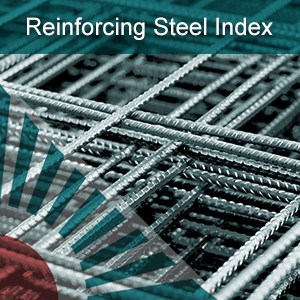 |
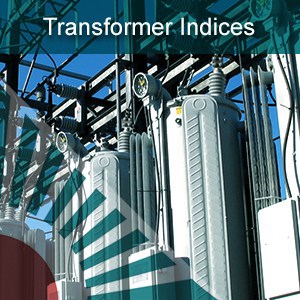 |
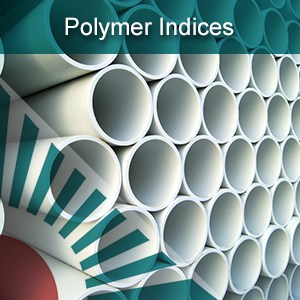 |
|
(Table E-7) |
(Tables J-1(A), J-2(A) and J-3(A) |
(Table M-5) |
So, if you are in the Reinforcing Steel industry, if you manufacture Transformers, or if you work with Polymers, you should really become a subscriber to SEIFSA’s Price and Index Pages, or as we like to call them – PIPS.
Now you can easily and professionally justify your inflation-related increases because as we all know costs naturally go up.
Click here to subscribe to PIPS
SEPTEMBER OUTPUT IN THE METALS AND ENGINEERING SECTOR DISAPPOINTING
Johannesburg, 9 November 2017 – The latest preliminary production data for the metals and engineering (M&E) sector released by Statistics South Africa today reflects a reduction in production, in line with the broader manufacturing sector, observed Steel and Engineering Industries of Southern Africa (SEIFSA) Chief Economist Michael Ade.
He said that, despite a favourable global growth outlook, constrained domestic conditions have not helped sustain the recent upswing in the M&E production recorded in August 2017. He said this meant that producers are now likely to end the year on a negative note.
The Statistics South Africa data revealed that production in the M&E sector decreased by 6.3% in September 2017 on a year-on-year basis, compared to the 10.7% year on year recorded in August 2017. On a month-on-month basis, the M&E sector also performed poorly, recording 3.1% growth in September 2017 (compared to 4.3% in August 2017).
Dr Ade said the poor performance of the M&E sector is consistent with the annual decrease in production recorded (1.6%) in the broader manufacturing sector in September 2017, compared to 1.5% recorded in August 2017.
He said the decrease in the broader manufacturing production data (coupled with the year-on-year decrease in mining production of 0.9% in September 2017) is expected to impact negatively on the industrial production index for September 2017, given the subdued economic conditions.
“This is bad news, given that the industrial production index performed better in August, in line with world trends, largely supported by the resilient manufacturing and utilities sectors,” Dr Ade said.
He added that the industrial production index for South Africa in August 2017 was 1.4%, closer to that of advanced economies like Britain (1.6%) and the United States (1.6%). However, the industrial production indices for all other comparator countries (except for Russia) such as Brazil, Russia, India and China– which together with South Africa are commonly known as BRICS – trended higher at 4.0%, than that of SA.
“The current manufacturing production data have diminished prospects for a further improvement in domestic industrial production in the short term, in an environment characterised by subdued economic growth,” Dr Ade said.
He added that the performance of key economic indicators for the M&E sector such as the Producer Price Index (PPI) for intermediate manufactured goods and the Purchasing Management Index (PMI), are also crucial in bolstering margins and supporting further growth prospects in the sector.
“Despite the consecutive increases of three sub-indices of the PMI survey (namely the business activity, the inventory levels and new orders sub-indices) from July 2017 to September 2017, the growth in output is still inconsistent” he said.
“The generally difficult domestic business conditions, characterised by low gross fixed capital formation, have rendered the M&E sector unattractive, and this partly explains the volatility. However, the expectation is for the volatility in output in the broader manufacturing sector and specifically the M&E sub-component to stabilise by the end of the year, barring any mild negative shock to the economy,” Dr Ade said.
He said much would hinge on the outcomes of the international ratings agencies’ decisions in November 2017, pronouncing on South Africa’s credit ratings and the ANC’s elective conference in December 2017.
He said the Federation will continue to track the M&E production data, including all dynamics which may impact on the data, and expressed the hope that the October 2017 manufacturing production and sales data will be positive.
Issued by:
Jackie Molose
Marketing, Sales and Communications Executive
Tel: (011) 298 9411 and 082 602 1725
Email: jackie@seifsa.co.za
Web: www.seifsa.co.za
SEIFSA is a National Federation representing 23 independent employer Associations in the metals and engineering industries, with a combined membership of 1600 companies employing around 200 000 employees. The Federation was formed in 1943 and its member companies range from giant steel-making corporations to micro-enterprises employing few than 50 people.
SEIFSA REQUESTS SUBJECT-MATTER EXPERTS
Contact Melanie Mulholland (Melanie@seifsa.co.za)
SEIFSA Request for Technical - Subject Matter Experts for NOCC’s (National Occupational Curriculum Content)
SEIFSA as the leader in the Centres of Specialisation DHET Project is inviting Subject Matter Experts (SMEs) from Industry to participate in the National Occupational Curriculum Content (NOCCs) Curricula and Syllabi development processes for the new QCTO occupational trade qualifications.
This is a unique opportunity for Industry to shape the curricula and syllabi, of seven trades, in order to fully meet the dire need for well trained and qualified 21stCentury Artisans.
It is critical that Industry participate in this process in order to ensure that industry shapes the curricula and syllabi for the following trades:
| Bricklayer |
| Carpenter and Joiner |
| Millwright |
| Rigger |
| Fitter and Turner |
| Pipe Fitter |
| Mechanical Fitter |
| Boilermaker |
| Electrician |
Subject Matter Experts (SMEs) from Industry who are willing and able to participate in the NOCC’s (National Occupational Curriculum Content) workshops should contact Melanie Mulholland (Melanie@seifsa.co.za).
The time frame for the roll out is between January and April 2018.
Please note that SMEs will not be paid for the NOCC’s process nonetheless will receive a travel allowance.
From the Chief Executive Officer’s Desk - November to December 2017
5 November 2017From the CEO's Desk
As 2017 draws to a close, South Africa finds itself mired in various controversies and on the brink of a financial precipice. The country finds itself at its worst since the dawn of democracy: the business confidence index is at its lowest since 1985, at the height of the punitive economic sanctions imposed by some in the international community against PW Botha’s apartheid government.
We have become so weary of political and financial scandals, mostly involving our political mandarins and those closely connected to them in the public sector. Our Head of State is a butt of justifiable, endless jokes and has proved to be such a major liability to South Africa Incorporated, and is in many ways responsible for the parlous state in which we find ourselves.
Disclosures or allegations of malfeasance and various other forms of corruption are made on almost a weekly basis, and these appear merely to disappear into the ether, without any visible consequences for those said to be the perpetrators. In a mere 23 years, we have moved from being the darling of the international community to being described as the most corrupt – or one of the most corrupt – countries in the world today.
Our economy is limping along and unemployment levels have reached frightening proportions – and continue to grow. While we began 2017 with much hope, in a matter of months international ratings agencies downgraded us from investment grade to junk status, with worse likely to come before the year is over, thanks to the destructive leadership of President Jacob Zuma and his merry band of myopic and insatiable supporters who can see no further than their own noses.
This was supposed to be the year in which our economy was meant to take a turn for the better, after a number of years of merely plodding along. Various forecasts had anticipated GDP growth of around 1,2% this year, with higher growth levels expected next year and beyond. With global demand for mining commodities recovering somewhat, South Africa was supposed to reap the benefits.
At a time when the country is crying out for inspirational leadership that rallies all of us to a common goal, we have the exact opposite: a leadership vacuum characterised by much cacophony, with whatever passes for leadership focused exclusively on personal survival and wealth accumulation by any means necessary. We have a governing party riven with colossal tensions and very much internally focused, with much of its energy expended on fighting internal battles. On the rare occasions when it does focus externally, it casts around for imaginary enemies.
Whatever its causes, the sad truth remains that post-1994 South Africa has never been as divided as it is now. Racial – and, sometimes, ethnic – cleavages are far more pronounced now that at any time in our democratic era. With our economy performing so dismally owing to the poor economic stewardship that we have experienced from our political leaders, fervent and legitimate cries have echoed everywhere for our economy to be radically transformed to include the black majority whose equity in SA Inc. is negligible, only to be countered by the understandable but mistaken refrain that all our efforts should be focused on growing our shrinking economic cake.
There is a clear, mistaken belief among some of our compatriots that real transformation cannot – and should not – take place until the economy grows. While theoretically a growing economy should make transformation easier, the reality is that transformation simply cannot wait until then. There is absolutely no reason why we cannot advance transformation even as we seek to grow the economy.
In this writer’s view, there are primarily two reasons for the widening and more pronounced racial tensions in the country at the moment. The first is that, with the exceptions of some individuals within it, the government of Jacob Zuma has simply excelled at embracing and celebrating incompetence, mediocrity and outright malfeasance, in the process giving potent ammunition to those among our white compatriots who had always had their doubts about black leadership.
In other words, the Zuma government did a fantastic job in supporting or affirming the stereotype among recovering racists that black people make terrible leaders and cannot run a sophisticated, modern economy. Given the terrible manner in which the scandal-prone Zuma has acquitted himself in office, even decent white compatriots who had believed that South Africa could be an exception on the African continent started to doubt and even question their initial optimism.
Secondly, our stuttering economy has made competition for opportunities and financial resources that much more acute, in the process sharpening the racial chasm. After all, while many may not consciously carry along with them the demon of racism, it is when they believe themselves to be likely to be locked out of opportunities to get jobs or to rise professionally in their jobs, or when they believe they have to give up or share their wealth – through the ownership component of the Broad-Based Black Economic Empowerment, for instance – that they retreat to a mental laager and feel impelled to fight back often covertly, given the considerable risks attached to doing so overtly.
And yet, what South Africa needs, in order to realise its full potential, is for us to leverage the strengths and talents of our compatriots. We need to work together as fellow citizens, with government, business and labour as strategic partners. We need to establish common goals that are indubitably in the country’s best interests and to work together single-mindedly towards their attainment.
As citizens, at election times we need to ensure that we do not give any one party too much power in terms of the electoral majority that it obtains. We need to make sure that we disabuse politicians of the mistaken belief that, once elected, they wield inordinate power. We need to do more than just remind them, but to make them feel that collectively we, the people, wield all the power and they are merely our servants whom we can ditch at will or reward with another term in office for good performance.
Like ordinary citizens, business has a very important role to play. By all means, it should continue to make its collective voice heard, but it has an even greater responsibility not only to respect and observe the country’s laws (including those dealing with transformation and BEE), but also to partner with the elected government and labour to rebuild our country.
—————————————————————————————————————-
Here is wishing you a Very Happy Christmas/ Festive Season and Happy New Year, dear reader. Thank you very much for your support of SEIFSA and our member Associations in 2017. We look forward to welcoming you back in January and we hope for a much better 2018.
Kaizer M. Nyatsumba
Chief Executive Officer
SEIFSA CAUTIOUSLY OPTIMISTIC FOLLOWING IMPROVED PURCHASING MANAGERS’ INDEX
JOHANNESBURG, 1 November 2017 - The Steel and Engineering Industries Federation of Southern Africa (SEIFSA) is cautiously optimistic about the sector’s performance in light of data released by the Absa Purchasing Managers' Index (PMI), which indicates an improvement in activity in the manufacturing sector.
This was the third consecutive increase and brought the index to its best since the deep in June 2017.
“The PMI is the first data point for the preceding month and it is very important in setting the tone for how producers and relevant stakeholders in the manufacturing sector view the month. Although it has been trending below the neutral 50-point mark for the fifth consecutive month, the fact that it has been slowly improving for the better part of the period is encouraging,” said SEIFSA Chief Economist Michael Ade.
He indicated that SEIFSA is apprehensive about whether the trend will continue, due to the prevailing political uncertainty. The overall year-to-date PMI data has had a volatile few months, mostly due to political turmoil. The volatility is expected to continue until the end of the year.
“The ambiguity in the Finance Minister’s Medium-Term Budget Policy Statement (MTBPS), its lackluster reception, coupled with the negative impact on the rand, further heighten the degree of uncertainty. The fluctuation in the index encapsulates the absence of normality and a ‘business-as-usual’ scenario in the metals and engineering (M&E) sector, making it even more difficult to plan in the short term,” observed Dr Ade
The latest composite seasonally-adjusted headline PMI increased by 2.9 points to 47.8 percent in October 2017, with all five major seasonally-adjusted sub-components increasing in October when compared to the previous month. Of the five sub-components, the new sales orders index increased the most, surging to 49.9 in October 2017 from 43.2 in September 2017. This was followed by an increase in the business activity index (45.0 index points), buoyed by an improvement in demand and output.
Dr Ade said given that, to a large extent, the purpose of the PMI is to give an early reading on manufacturing production data, the expectation is for the continuous improvement in business activity to filter through to the upcoming manufacturing data for September 2017.
“The employment sub-index improved to 44.3 index points, highlighting improvement in employment prospects in the manufacturing sector in general and the M&E sector in particular. The index – which has also been very volatile – is largely in line with the lagged employment figures released by Statistics SA’s Quarterly Labour Force Survey (QLFS) yesterday, confirming a net employment gain in the formal sector. The formal sector recorded an impressive employment gain of 187 000 and SEIFSA is optimistic that the net increase in jobs will ultimately improve the official unemployment rate of 27.7 percent in Q3:2017 (when compared to Q3 of 2016),” Dr Ade said.
He said that a series of temporary downward shocks in the M&E sector – such as commodity price shocks, merchandise trade shocks, demand shocks and selling price shocks – are now in the past, concerns around generally low business confidence, increased instability and poor ease of doing business are still prevalent. While business confidence increased in the third quarter of 2017 to 35 percent (when compared to the 29 percent recorded in the second quarter (Q2) of 2017), the confidence level is still well below the required 50 percent.
Dr Ade said poor business confidence, increased uncertainty and volatility were not conducive for doing business. He said that it was important that everything possible is done to contain volatility in the exchange rate and other equally important input costs is paramount, especially since input costs in the M&E sector (as captured by SEIFSA’s composite input cost index) are now trending slightly higher than recorded in the first two quarters of 2017.
He warned that the rising input cost has the propensity to gradually erode margins in the sector, thereby rendering the sector more unattractive to potential investors.
Issued by:
Jackie Molose
Marketing, Sales and Communications Executive
Tel: (011) 298 9411 and 082 602 1725
Email: jackie@seifsa.co.za
Web: www.seifsa.co.za
SEIFSA is a National Federation representing 23 independent employer Associations in the metals and engineering industries, with a combined membership of 1600 companies employing around 200 000 employees. The Federation was formed in 1943 and its member companies range from giant steel-making corporations to micro-enterprises employing few than 50 people.
SEIFSA GRAVELY CONCERNED THAT U.S. INVESTIGATIONS INTO CARBON AND ALLOY STEEL WIRE ROD IMPORTS WILL WORSEN LOCAL INDUSTRY’S WOES
JOHANNESBURG, 30 OCTOBER 2017 - The Steel and Engineering Industries Federation of Southern Africa ( SEIFSA) is extremely concerned that the challenges of the local steel industry will only worsen if the U.S. Department of Commerce and the U.S. International Trade Commissions’ (ITC) parallel investigations to determine if American producers have been harmed by carbon and alloy steel wire rod imports from Italy, the Republic of Korea, South Africa, Spain, Turkey, Ukraine and/or the United Kingdom, prove positive.
SEIFSA Chief Economist Michael Ade said that affirmative determinations, coupled with the ITC final injury determinations, will result in the Commerce Department issuing anti-dumping orders and imposing relevant duties, thus increasing local steel producers’ exporting costs, and this will eventually squeeze their profit margins.
The Department of Commerce’s preliminary determinations indicate that producers/exporters in the seven countries have sold carbon and alloy wire rod in the United States at less than fair value. Foreign companies that price their products in the U.S market below the cost of production or below prices in their home markets are subject to anti-dumping duties.
“Specifically, investigation of South Africa found that exporters dumped wire rod in the US at margins of 142.26 percent (collapsed entity known as Scaw Metals Group and Consolidated Wire Industries) based on adverse facts available. All other producers/exporters in South Africa were assigned a rate of 135.46 percent,” Dr Ade said.
De Ade said SEIFSA believes that the investigation by the U.S. is a “tit-for-tat” retaliation for South African domestic steel industry successfully pushing for import tariffs and safeguard duties from cheap international imports. He said this highlights the long-term demerits of inward-looking protectionist trade policies.
He said the U.S. enquiry appeared to be only the tip of the iceberg, and could be a precursor to extension to other domestic steel products, potentially resulting in many overseas trading partners starting to retaliate and to protect their steel industries.
“This is of grave concern to SEIFSA, given the strategic importance of the local steel industry. The need for unity, including support for a sector-related Government policy stance from all stakeholders across the value chain of the local steel industry, is imperative,” Dr Ade emphasised.
The US Department of Commerce is currently scheduled to announce its final anti-dumping determinations on 9 January 2018. SEIFSA will continue to monitor the situation closely.
Issued by:
Jackie Molose
Marketing, Sales and Communications Executive
Tel: (011) 298 9411 and 082 602 1725
Email: jackie@seifsa.co.za
Web: www.seifsa.co.za
SEIFSA is a National Federation representing 23 independent employer Associations in the metals and engineering industries, with a combined membership of 1600 companies employing around 200 000 employees. The Federation was formed in 1943 and its member companies range from giant steel-making corporations to micro-enterprises employing few than 50 people.
WITH NEASA, FEAR IS THE KEY TO SUCCESS
NEVER UNDER-ESTIMATE THE POWER OF THE NEGATIVE
Dear Stakeholder
By now you will no doubt have had at least one of NEASA’s ever-wailing newsletters clogging your in-box since SEIFSA member Associations successfully concluded a three-year Settlement Agreement with all the industry trade unions in August. Those of us concerned about certainty and stability in the metals and engineering sector were pleased that such a settlement could be reached without even a single day lost to industrial action. After all, this is only the fourth three-year Agreement in SEIFSA’s 74-year history and the very first one concluded without industrial action in the past 10 years.
In its own eyes, NEASA has a special understanding of the dynamics of the metals and engineering industries. Its boring refrain is both simple and simplistic: “All our economic pain comes from SEIFSA”.
The organisation is simply incapable of advancing its agenda, such as it is, without reference to SEIFSA. It is as if SEIFSA is its currency.
There is little wonder, then, that when one objectively surveys almost twenty (20) years of NEASA’s participation on the Metals and Engineering Industries Bargaining Council, the only unbroken thread that can be discerned from its participation is its extraordinary and spectacular record of not having achieved a single thing for its constituency.
Zero. Zilch. Nada. Niks.
Given that, despite its ever shrill voice and the insults routinely hurled at all and sundry, NEASA has failed to secure any of its key objectives over the years, surely it is time for a rethink? In particular, NEASA needs explicitly to provide substance to its claims, to explain many of its bizarre actions and to inform all sobre-minded South Africans exactly what it would like SEIFSA, industry and other stakeholders to buy into and how its goals can be accomplished practically. In other words, let’s get to see the organisation’s vision for the future.
It is easy to criticize, to engage in penny-pinching and to throw barbs, but doing so without advancing any reasonable and constructive alternative is intellectually bankrupt.
Instead of distancing itself from the Bargaining Council, the unions and industry role players, NEASA needs to decide where it stands on the collective bargaining front, industry institutions and the ideals of fair, decent and collegial engagement.
NEASA’s biggest failing is that it usually knows roughly what it is against, but has absolutely no credible positive programme to define and realise concrete policy objectives.
NEASA claims to know all the ills that befall our industry, routinely bemoaning the role of SEIFSA, the trade unions, the Bargaining Council, Government and big business. The organisation excels at pointing fingers at anyone and everyone – except for itself! In our view, no organisation could possibly be more guilty of hypocrisy, short-sightedness and opportunism in equal measure.
NEASA claims to know where some of the sector’s problems come from:
- the often- repeated but factually incorrect “cosy relationship” between business (by which it means SEIFSA) and the trade unions;
- the assertion that collective bargaining has been usurped by scary ogres called “Captains of Industry”, at the expense of poor, helpless SMMEs; and
- the preposterous allegation of illegal deals being concluded in the course of industry collective bargaining processes.
The organisation has absolutely no shame. Its allegations get more outlandish and weirder and weirder by the day. The trouble is that NEASA has no real idea what to do to remedy any of these real or imagined problems. It attacks all and sundry, but has no equivalent philosophy concretely to get these issues addressed.
For the record:
- SEIFSA operates strictly in accordance with a mandate from its 23 member Associations; and
- SEIFSA represents all employers, both BIG and SMALL.
The vast majority of companies that are members of our Associations are small: a whopping 66% of our collective member companies employ fewer than 50 people. Therefore, contrary to NEASA’s nauseating, self-serving propaganda, we always have the best interests of all employers at heart, including small employers who represent two-thirds of our constituency.
Regrettably, we cannot but liken NEASA’s behaviour to that of North Korean dictator Kim Jung-un. Like the Korean dictator, NEASA excels at sabre rattling and declaring imaginary wars, but is very poor when it comes to searching for lasting solutions.
So, dear reader, never under-estimate the power of the negative. Scare tactics tend to resonate. As President Bill Clinton commented after the November 2016 US election that voted Donald Trump into office: “It’s highly complicated: people don’t like negative, divisive environments – but they frequently reward them in elections.”
As French philosopher Voltaire put it: “I disapprove of what you say, but I’ll defend to the death your right to say it.”
Accordingly, we detest NEASA’s divisive bile, but we will defend the organisation’s right to spew it. We do caution very strongly, though, that you, dear reader, do not swallow it holus-bolus.
Kaizer M. Nyatsumba Lucio Trentini
Chief Executive Officer Operations Director
SEIFSA WELCOMES PPI DATA IMPROVEMENT, BUT CAUTIONS AGAINST VOLATILE RAND
JOHANNESBURG, 27 OCTOBER 2017 – The increase in producer prices in September 2017 provides some much-needed comfort for producers, the Steel and Engineering Industries Federation of Southern Africa (SEIFSA) said today.
Commenting on the latest data on Producer Price Index (PPI) for intermediate manufactured goods released by Statistics South Africa, SEIFSA Economist Marique Kruger said the industry can be encouraged by the latest data, which show the PPI for intermediate goods remaining in an expansionary terrain for three consecutive months.
“This indicates a continued improvement in factory gate prices and operating business conditions in the metals and engineering (M&E)
sector. The data provide some relief for producers in the sector, who are beginning to derive the benefit of a modest recovery in domestic demand and declining costs,” Ms Kruger said.
She said this was consistent with SEIFSA’s input cost index which decreased to 0.9 percent in September 2017, when compared to 1.7
percent recorded in August. She said the improvement in the latest PPI data was generally in line with an increase in the broader PPI for final manufactured goods, which recorded an annual change of 5.2% in September 2017, compared with 4.2% in August 2017.
The Statistics South Africa data showed that the PPI for intermediate manufactured goods rose to 2.1 percent in September 2017, up from 2
percent in August.
Ms Kruger said that this was encouraging when viewed “against the backdrop of Finance Minister Malusi Gigaba’s bleak news in his Medium-Term Budget Policy Statement (MTBPS) yesterday, which highlighted a tight economic environment characterised by poor tax
efforts and tax morale, expanding government expenditure, ballooning deficits and high debt levels”.
However, Ms Kruger cautioned that although the PPI for intermediate goods in the M&E sector provides a glimmer of hope, economic activity within the sector and broader manufacturing will remain constrained by depressed business and consumer confidence levels that have been linked to perceived policy uncertainty and political turmoil. She said these will definitely keep producer prices volatile in the near term, thus making it very difficult for businesses to plan in advance and contain costs.
Ms Kruger expressed “grave concern” about the latest economic and political developments, which have the potential to quickly reverse the
positive growth trajectory recorded in the second quarter of 2017.
“In an atmosphere of generally low business and consumer confidence, low domestic demand, structural challenges and political uncertainty, the Finance Minister’s bleak news from yesterday’s speech raised more questions than providing answers,” she said.
Ms Kruger also raised disquiet about the oscillating rand’s effect on the economy, saying that a depreciating rand would be less beneficial for inflation, imported input costs and margins of companies in the M&E sector.
“The M&E sector is relatively small and open, hence volatility in price trends and the variables that impact the price trends does not augur well for it. A positive differential in the selling price inflation and input cost inflation needs to be maintained in order for the sector to stay attractive for existing and new investments,” Ms Kruger argued.
ENDS
Issued by:
Jackie Molose
Marketing, Sales and Communications Executive
Tel: (011) 298 9411 and 082 602 1725
Email: jackie@seifsa.co.za
Web: www.seifsa.co.za
SEIFSA is a National Federation representing 23 independent employer Associations in the metals and engineering industries, with a combined membership of 1600 companies employing around 200 000 employees. The Federation was formed in 1943 and its member companies range from giantsteel-making corporations to micro-enterprises employing few than 50 people.
SEIFSA STRONGLY OPPOSED TO ESKOM’S PROPOSED ELECTRICITY TARIFF HIKE
JOHANNESBURG, 26 OCTOBER 2017 – The Steel and Engineering Industries Federation of Southern Africa (SEIFSA) has expressed strong opposition to Eskom’s application to the National Energy Regulator of South Africa (NERSA), saying such an adjustment would cause great harm to the metals and engineering sector.
In a submission to NERSA, SEIFSA Chief Economist Michael Ade said the metals and engineering sector is still struggling to meet the high pre-crisis demand levels attained in 2007, with recovery in production having been modest at best.
“If the tariff increase application goes through, it will be a critical setback for the sector’s productivity. The sector exports 40 percent of its production and international competitiveness is vital for its survival. An inevitable consequence of the proposed 19.9 percent hike by Eskom will be more loss of jobs,” said Dr Ade.
He said that high electricity tariffs add to production costs, a situation simultaneously accompanied by the declining average change in selling prices received by local producers, and squeezes profit margins. He said that although production had just recently picked up in the sector, domestic demand conditions are still tough.
Dr Ade cautioned that excessive electricity tariff increases will eventually stifle Eskom’s supply in the long term as large energy-intensive sectors progressively cut down on demand and install their own powerful diesel generators to mitigate costs.
He said that, in the event that NERSA felt that an electricity tariff increase was necessary, then such an adjustment would have to be “at a much lower percentage that has been requested”.
Dr Ade said the metals and engineering sector’s share in manufacturing output is nearly 30 percent and it contributes to approximately 3.6 percent of the country’s gross domestic product. He added that last year the sector employed around 480 000 people directly.
ENDS
Issued by:
Jackie Molose
Marketing, Sales and Communications Executive
Tel: (011) 298 9411 and 082 602 1725
Email: jackie@seifsa.co.za
Web: www.seifsa.co.za
SEIFSA is a National Federation representing 23 independent employer Associations in the metals and engineering industries, with a combined membership of 1600 companies employing around 200 000 employees. The Federation was formed in 1943 and its member companies range from giant steel-making corporations to micro-enterprises employing few than 50 people.
CONSUMER PRICE INFLATION FIGURES PLACE RESERVE BANK UNDER PRESSURE
JOHANNESBURG, 18 OCTOBER 2017 – The Consumer Price Inflation (CPI) figures released by Statistics South Africa earlier today place the Reserve Bank in a difficult position on whether or not to continue implementing a more gradual policy stance, Steel and Engineering Industries Federation of Southern Africa economist Marique Kruger said today.
She was speaking following Statistics South Africa’s disclosure that the annual consumer price inflation was 5,1 percent in September 2017, up from 4,8 percent in August 2017, indicting a 0,5 percent month-on- month increase in September 2017.
“The latest figures were the second consecutive year-on- year increase since inflation was at a low of 4,6 percent in July 2017, matching the lowest figure recorded almost two years ago. The latest figures were also the sixth consecutive reading that had fallen within the Reserve Bank’s target range of 3 percent to 6 percent,” Ms Kruger said.
She said the inflationary trend was largely assisted by the recent increase in oil and petrol prices and a weakening exchange rate. She said these factors also accounted for the increase in inflation numbers. This has concomitantly led to an increase in transportation costs and the cost of doing business for the companies in the M&E sector in particular.
“Increasing petrol prices, the volatile rand and high policy uncertainty are expected to continue to play into the inflation figures for the coming months, leading to the ANC national policy conference in December 2017. Therefore, inflation will be of great concern to the South African Reserve Bank, which is keenly watching local and international developments,” said Ms Kruger.
ENDS
Issued by:
Jackie Molose
Marketing, Sales and Communications Executive
Tel: (011) 298 9411 and 082 602 1725
Email: jackie@seifsa.co.za


